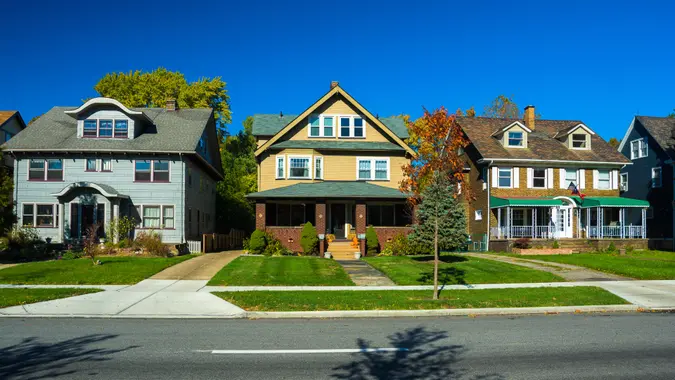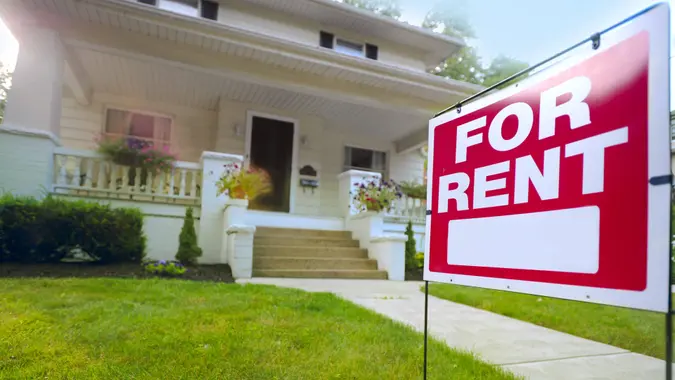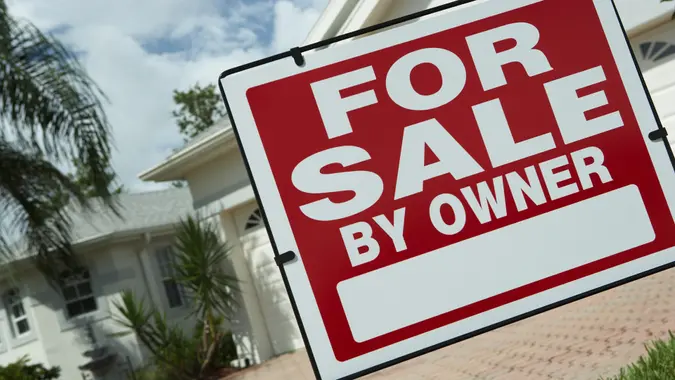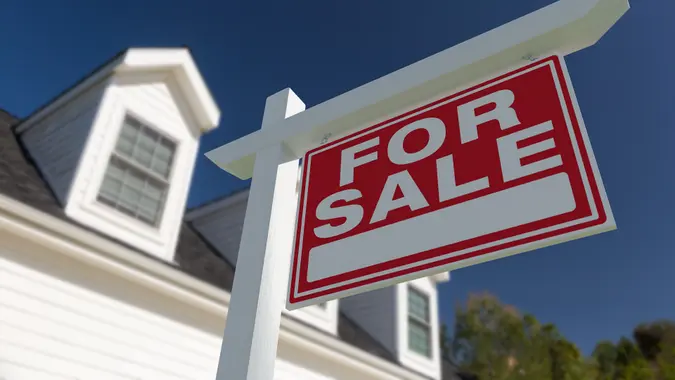Here’s How Much You Need To Save Annually To Buy a House in New York in 5 Years

Commitment to Our Readers
GOBankingRates' editorial team is committed to bringing you unbiased reviews and information. We use data-driven methodologies to evaluate financial products and services - our reviews and ratings are not influenced by advertisers. You can read more about our editorial guidelines and our products and services review methodology.

20 Years
Helping You Live Richer

Reviewed
by Experts

Trusted by
Millions of Readers
New York is one of the most expensive places to buy a house — Rocket pegged the median home price in New York at $862,270 in January. That’s up by nearly 4% year-over-year, and it gives you an idea of how much you have to save over the next five years if you’re planning to buy a house.
While there are many variables that determine when you are ready to buy a home, much of your readiness revolves around how much you have already saved, the down payment and whether you can keep up with the corresponding monthly mortgage payments. These are the numbers to keep in mind if you want to buy a house in New York in five years.
Keep Inflation in Mind
If you buy a house in five years, the median selling price likely won’t be $862,270. This sales price is notably from January, which is typically a slower real estate market for northeastern homes. Aspiring homeowners should use a 3% growth rate when calculating inflation to gauge how much they truly need.
If the 3% growth rate holds, a $862,270 home will be worth about $888,138 in five years. You have to think about this figure instead of $862,270, and it influences how much money you need for the down payment.
How Much Do You Need for the Down Payment?
Using the $888,138 figure, you can calculate how much money you need to save to make a 20% down payment. While a 20% down payment allows you to avoid private mortgage insurance, borrowers with good credit and low debt-to-income ratios can buy property with as little as 3% down. Here’s a look at both down payment percentages for the calculations.
A 20% down payment requires $177,628. If you can make a 3% down payment and afford the higher mortgage payments, you only have to save up about $26,644. It’s easier to round those numbers up to $200,000 and $30,000 when planning how much you have to save — it makes the calculations easier and also might leave you with some extra funds to cover unexpected costs.
Consider Closing Costs
You also have to anticipate closing costs, which typically range from 2% to 5% of the loan’s value. Home buyers can pay those costs right away or roll them into the mortgage. These calculations will assume that you roll the closing costs into your mortgage, but you will end up with higher monthly payments.
If you want to pay closing costs right away, tack on an extra 5% to how much you have to save — assume you have to pay high closing costs to ensure that you have at least enough instead of being a little short.
How Much Do You Need To Save Each Year?
If you’re building toward a $200,000 down payment, you have to save $40,000 per year over the next five years. That comes to just over $3,333 per month.
The $30,000 down payment is easier to save for, as you would only have to save $6,000 per year for the next five years. That comes to $500 per month.
However, you should aim closer to a 20% down payment than a 3% down payment, even if you fall a little short of 20%. Some mortgage lenders may require that you put down more than 3%, as a higher down payment will result in a more favorable debt-to-income ratio.
It can also better to set more ambitious savings goals that force you to make some changes to your budget. Saving $500 each month is an excellent starting point that will result in your saving $6,000 per year. However, you can reach your savings goal much faster if you save $700 per month instead and gradually inch it up.
 Written by
Written by  Edited by
Edited by 

























